Flaman Rentals Blog
RSS feed
Categories
Recent activity
- What's it like being a Flaman Rental Dealer?
- A Brief History of the Newest Flaman Store in Swift Current
- Disney's NEW Leadership Excellence Training Course
- Disney's Approach To Quality Service
- Disney's Approach To Quality Service
- Trailering 'Rules of the Road' Updated
- 10th Annual Frank J. Flaman Foundation Gala 2016
- Why Frank Cares
Authors
Archive
Tips and Resources for a Safe Harvest
Posted by Jennifer Thompson Aug 17, 2020
As harvest begins to start in many parts of Western Canada, Flaman is here to provide the tools and equipment you need to get your crop off quickly and safely. Along with our wide variety of Harvest Helpers to aid you in your work, we’ve collected some important and useful safety tips for harvest time. We want to make sure all our customers return safely from the field and have the resources to support their employees and family members on the farm.
This post will look at 4 main types of safety:
- Grain bin entrapment
- Fire safety and prevention
- Machinery and power lines
- COVID-19 safety
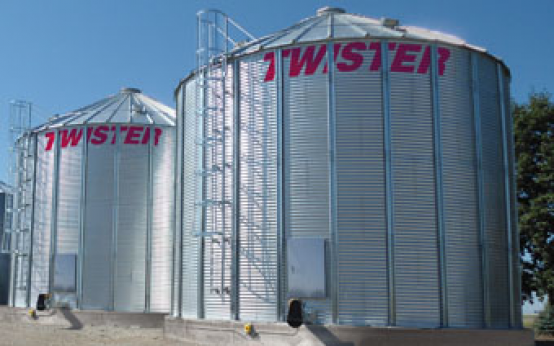
Grain Bin Entrapment
Tough grain is one of the leading causes for producers to enter a bin. Many studies have shown that entering a bin to break up spoiled grain while operating unloading equipment is the leading cause of grain entrapment. A person could become completely covered within 20 seconds. Across Canada, there’s an average of six fatalities every year from grain entrapment or engulfment.
If you need to enter a bin to asses grain, there is a Grain Bin Assessment chart from the Canadian Agricultural Safety Association you can use to assess if it’s safe to enter the bin.
This fact sheet from the Canadian Centre for Health and Safety in Agriculture also has some helpful information about how grain entrapment occurs, as well as preventative and safety measures.
And finally, if you wish to create a Confined Space Management Program for your farm, this quick start guide from Ag Safe Alberta is a useful tool. Along with grain bins, confined spaces also include sumps, wells, feed bins, attics and even some equipment.
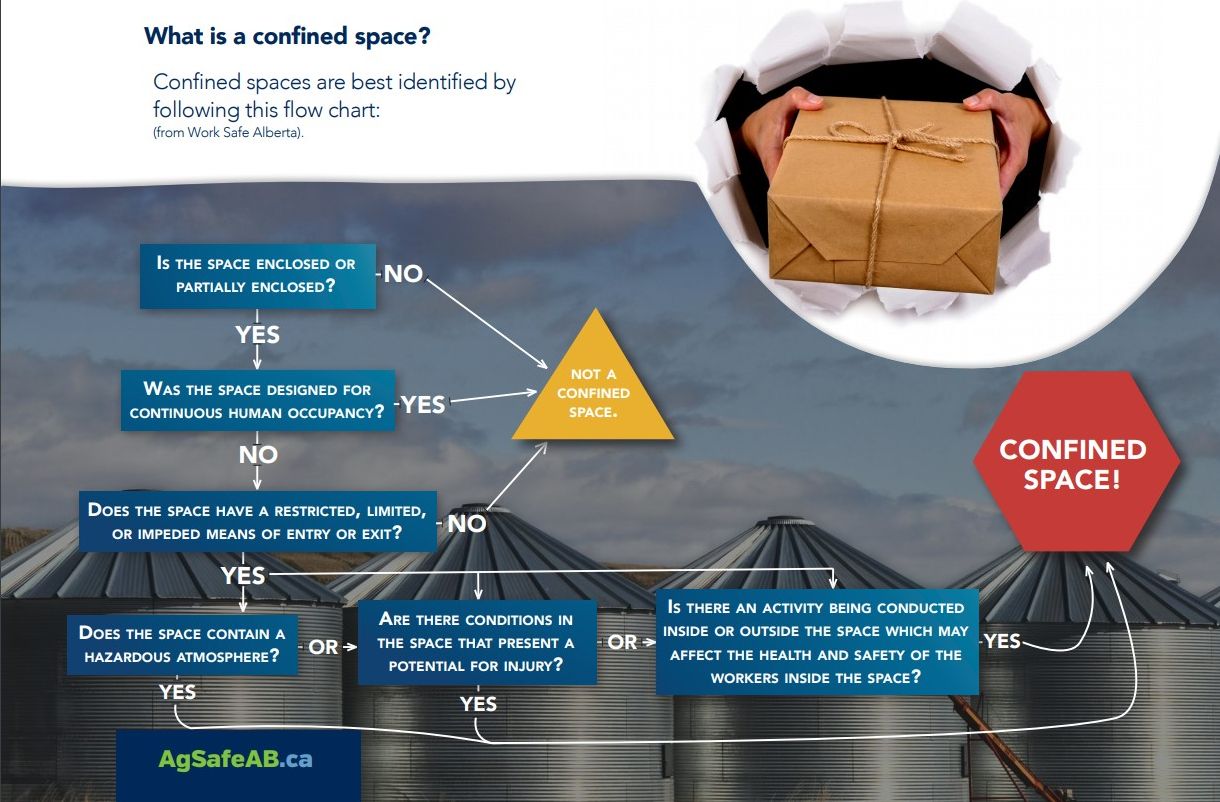
Fire Safety and Prevention
Fires in the field can happen all too suddenly when working with dry, flammable material and hot mufflers and electrical wiring. There are some simple pre-cautionary measures you can take to help avoid the risk of injury or loss of equipment due to fire.
- Have working fire extinguishers mounted on equipment, ideally one in the cab and one accessible from the ground. Alberta Agriculture recommends a 10 pound dry chemical, multi-purpose ABC extinguisher and a 2.5 gallon pressurized water extinguisher on combines.
- Remove crop residue, dust, debris, dirt and excess lubricant around all heat sources regularly. Check for a buildup of combustible crop residue around engines and exhaust systems, concealed drive belts and pulleys that can overheat due to friction.
- Be careful when using low clearance vehicles in fields, as exhaust pipes and catalytic converters can ignite dry grass or stubble.
- Check exposed wiring and fuel/hydraulic lines for damage, wear and deterioration.
- Allow engines to cool before refueling.
And for added safety, Flaman carries a variety of firefighting pump and tank units, such as the Enduraplas Fire Ranger or the BE Fire Cart, to allow you to quickly put out any fires in the field while harvesting.
Machinery and Power Lines
Electrical safety is another important area to be aware of when working with large machinery on a farm. More than 40% of agricultural workers in Canada have reported direct hits or near misses with power lines. In 2019, there were 326 farm safety incidents reported to Sask Power. The most common causes of electrocutions on the farm are portable grain augers, large combines, high clearance sprayers and other tall equipment that can come into contact with overhead power lines.
There are two types of electrical injury that can occur:
- Electric shock, when electric current passes through the body causing injury or death.
- Arc flashes: a blast of energy caused by an electric arc, which can produce sounds waves, extreme heat, shrapnel and more, This can lead to lung injuries, ruptured ear drums, burns, blindness or death.
This guide “Electrical Safety on Saskatchewan Farms" from Sask Power talks about potential risks and hazards and offers safety tips, guides and checklists to make sure you and your workers come home safe. Or you can print out this Farm Safety Checklist to make sure everyone knows how to avoid overhead lines and what to do if an accident occurs.
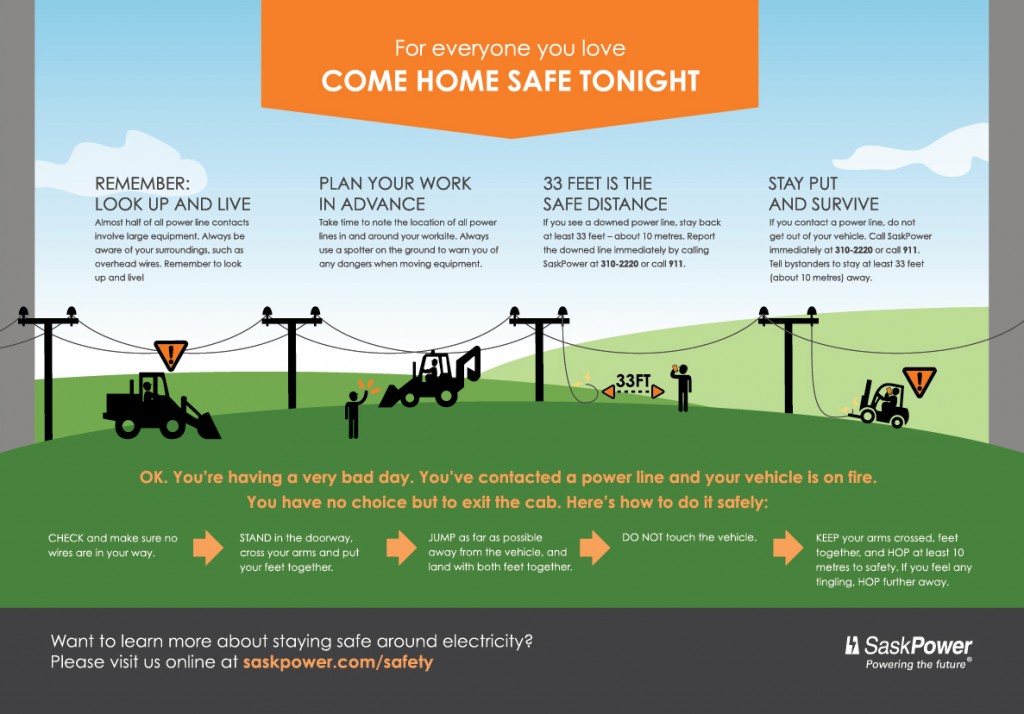
COVID-19 Safety
This year, farming operations will have the added tasks of protecting workers and their family from COVID-19. As an essential service, we recognize that farmers must continue to work to grow our food and feed our country.
Along with the general pre-cautions such as hand washing, physical distancing, cleaning of work attire and wearing gloves, this fact sheet from the Canadian Centre for Occupation Health and Safety offers many safety tips specifically for the agricultural industry in areas such as:
- Transportation
- Sanitation
- Group Living and Residence Recommendations
- Team and Site Management
- And much more.

For those interested in creating an overall safety plan for their operation, this workbook from Ag Safe Alberta lays out the steps to create your own Farm Safe Plan.
Posted in Ag news | Tagged with harvest safety farming grain bins electrical safety | More articles by Jennifer Thompson
Move your auger or conveyor safely with the Lift-EZ Hydraulic Jack
Posted by Jennifer Thompson Jun 30, 2020
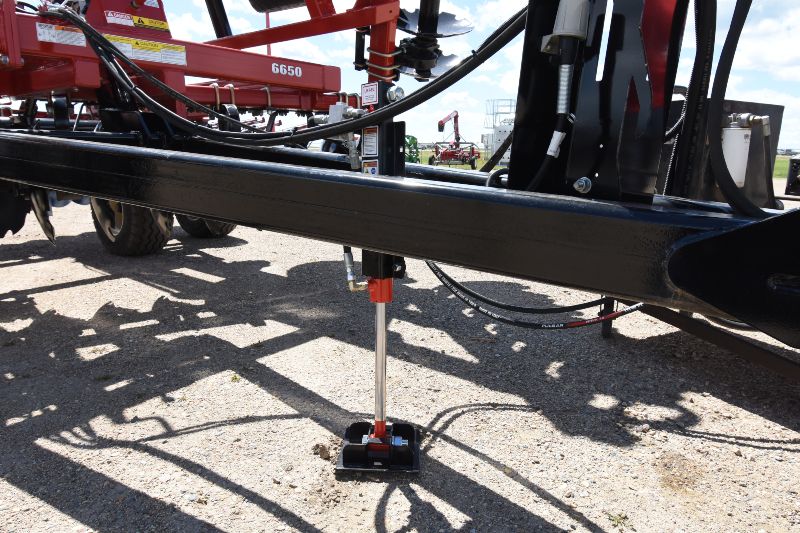
If you’ve ever moved grain with a conveyor or auger, you know that standard screw jacks can be inconvenient and a hassle to hook up and connect with your tractor. And if you’ve ever said to yourself “there has to be a better way,” then you’re not alone. The Lift-EZ Hydraulic Jack is a safe and convenient way to connect your auger or conveyor to your tractor
We spoke with the product’s inventor, Bret Watson, the operations manager at Flaman’s Swift Current location, about where the idea for this product came from, and why every farmer could use one.
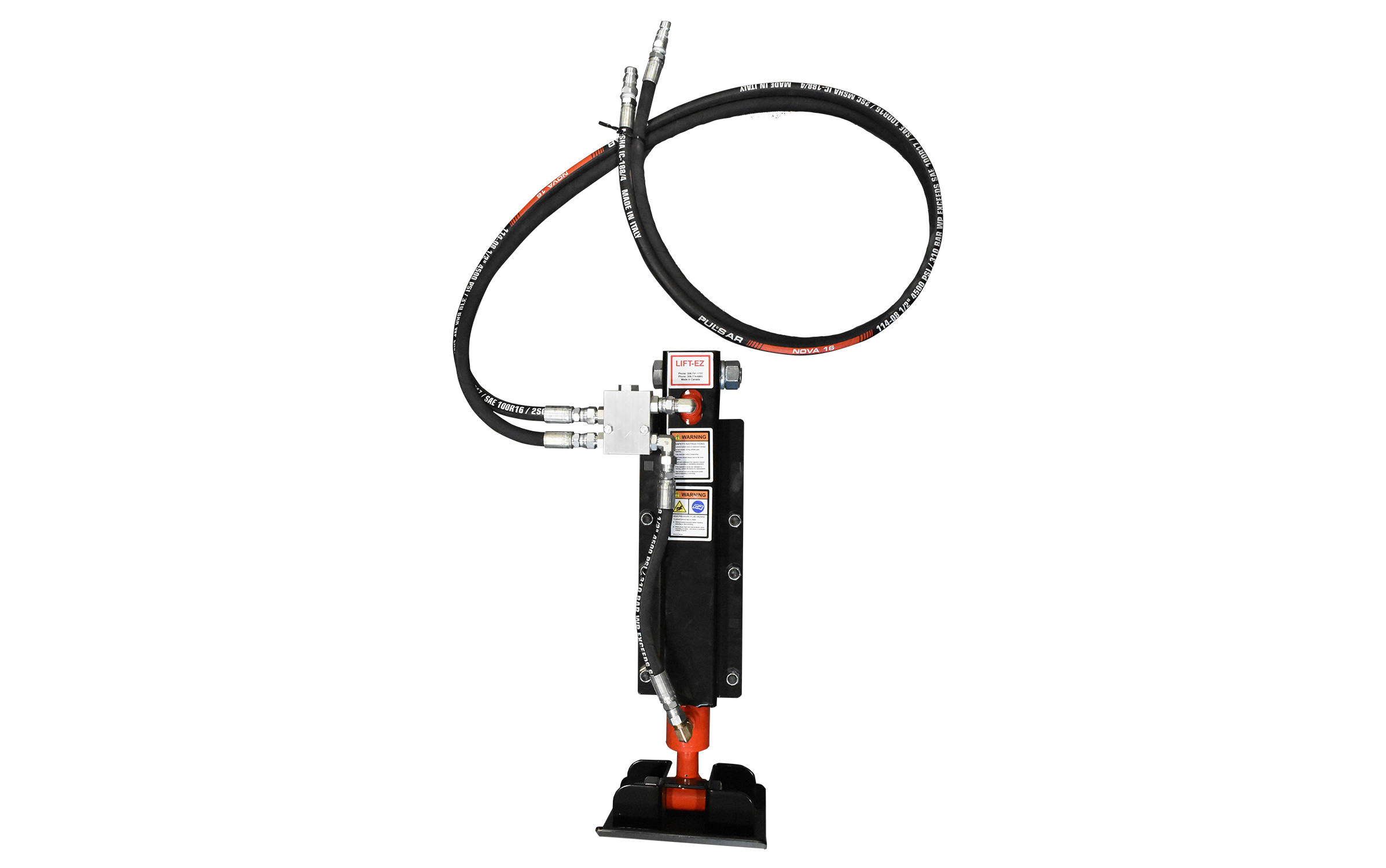
Tell me where the idea for this hydraulic jack came from?
Bret: I invented it two years ago with Bob Schafer. Bob has a service company that deals with farmers, and his customers were having trouble with their jacks getting damaged. They needed another option.
Bob and I were having coffee one day and we said to ourselves, “this is something we could do.” Bob is a mechanic by trade, and I have an engineering degree and manufacturing background. Hydraulics are readily available on back of a tractor so that’s why we chose that route.
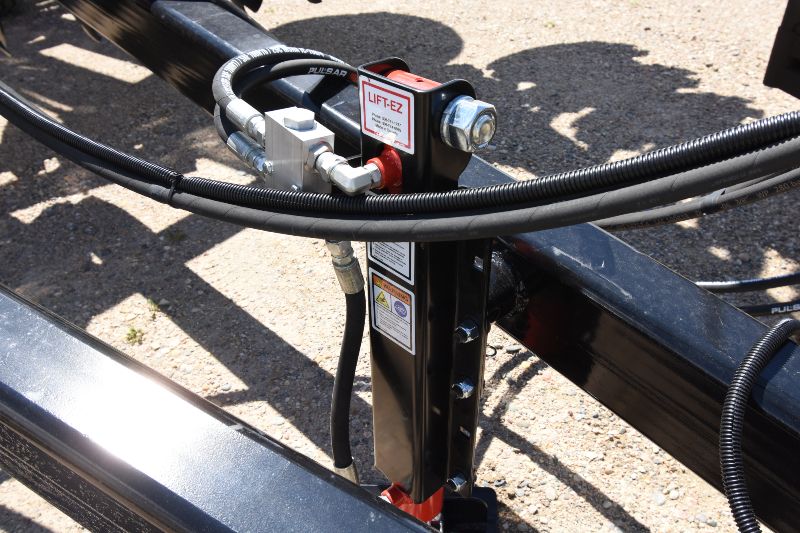
What was the creation process like?
Bret: We started with some drawings on a piece of paper, then I used CAD to develop it and make a prototype. Then we fine-tuned it to make sure it was user-friendly. From concept to completion it took about 3-4 months.
Tell me about the jack and what makes it different.
Bret: With this jack, the farmer can back up to auger/conveyor, connect the jack hoses and then safely lower/raise the unit from the cab of his/her tractor. They can easily get everything aligned, then slide in the implement pin, raise the Lift-EZ jack and then they’re good to go. It uses the hydraulics that tractors already have, so it’s easy to add on. I haven’t seen anything like this for farm use before.
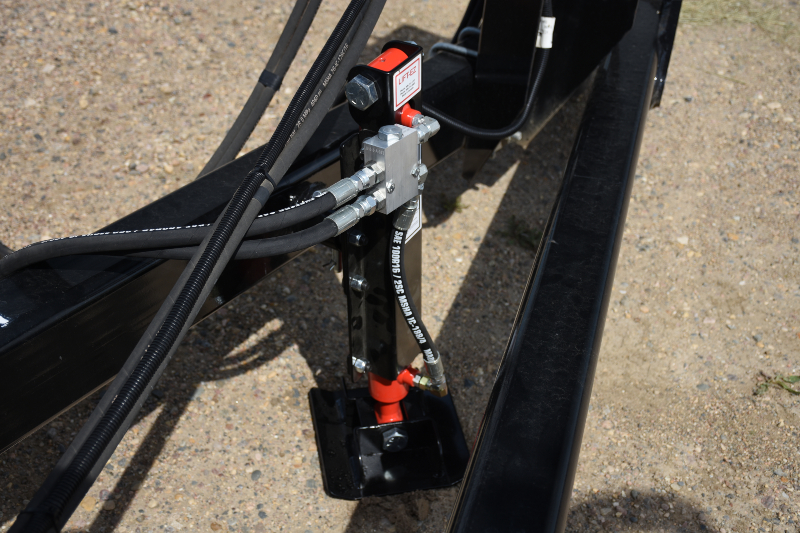
Tell me about the added safety features of this hydraulic jack.
Bret: The jack comes with a hydraulic safety valve, so if there is any damage to any hydraulic hose the jack won’t come down. You can adjust the jack from your seat safely. When you get out of the tractor, you don’t have to worry about the jack creeping down, the valve locks it and won’t allow it to come down unexpectedly, which of course could be very dangerous.
Can this jack go on any auger or conveyor?
Bret: Yes, it can be retrofitted to any auger or conveyor. The jack stub can be mounted at any height in order to replace any standard screw jack. It’s very user-friendly.
What inspires you to invent products like this?
Bret: I’m driven by solving problems and safety. This product came right from a farmer’s need. It’s a safer product and something that will help them.
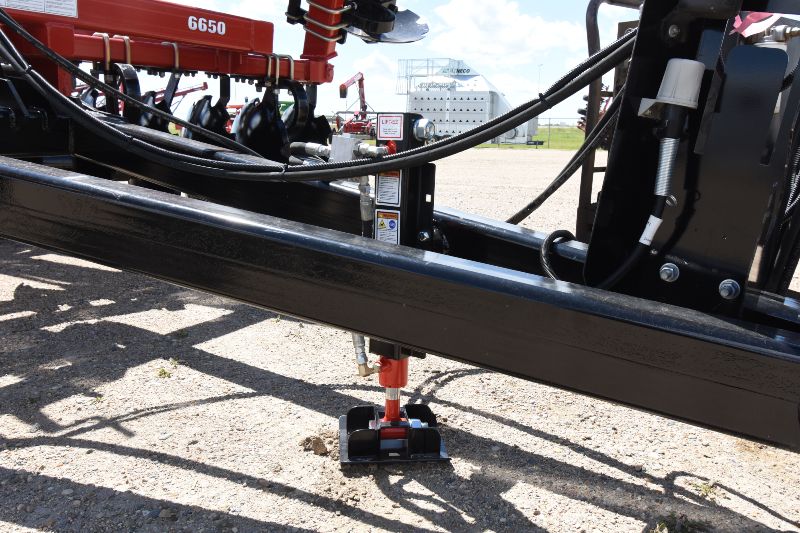
The Lift-EZ Hydraulic Jack will be available at most Flaman locations in Saskatchewan. Please call your local Saskatchewan store to ask about availability or to speak to a product specialist.
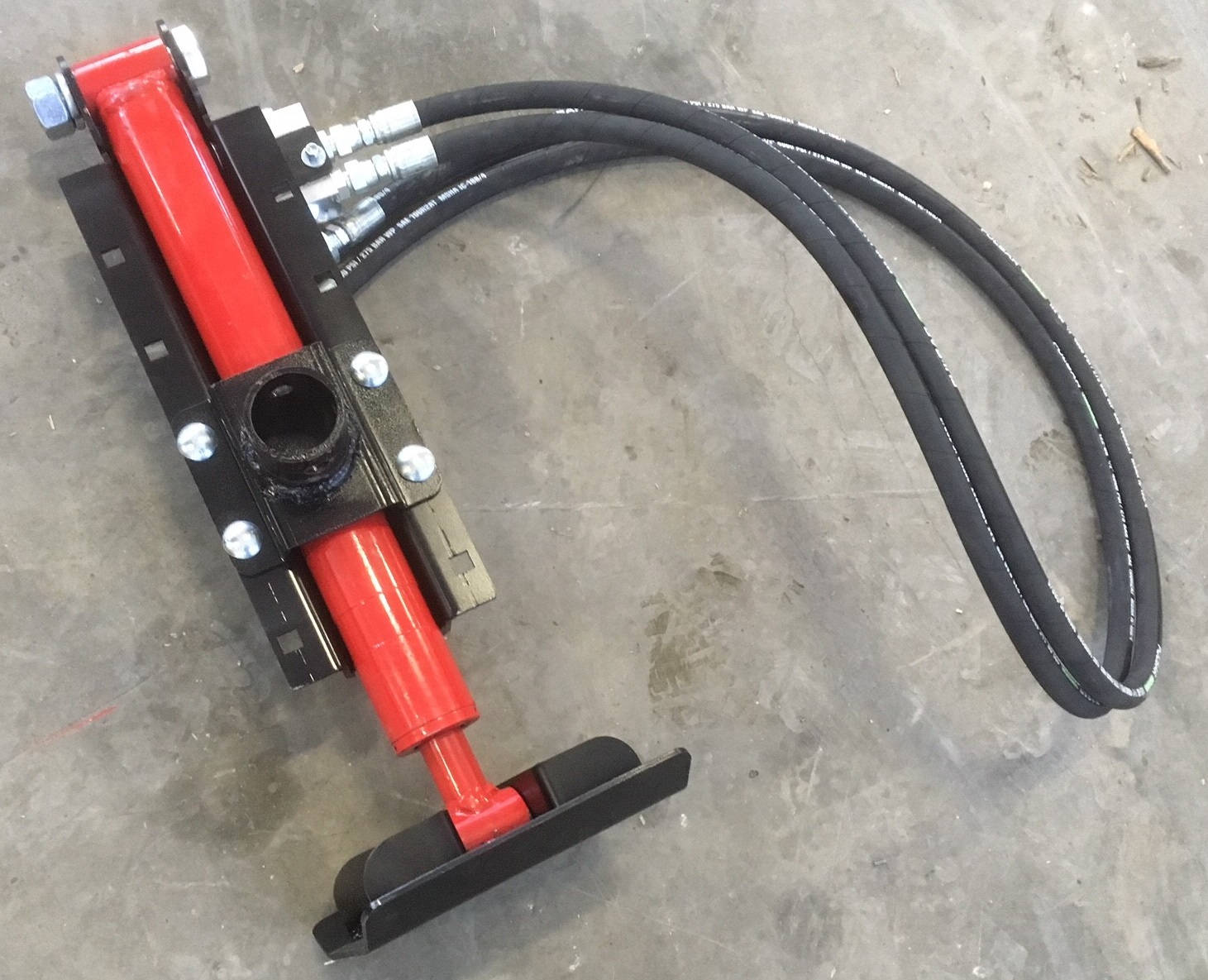
Posted in Product Information | Tagged with jack hydraulic jack auger conveyor safety | More articles by Jennifer Thompson
Flaman Yard Safety
Posted by Flaman May 27, 2015
Safety is everyone’s responsibility!
Posted in Local News | Tagged with yard safety Flaman | More articles by Flaman
What is the NATM?
Posted by Flaman Feb 23, 2015
So if you’re looking for a new or used trailer, keep this in mind. Look for NATM dealer associate marked trailers and do your research. It’s worth it.
Posted in Trailer Tips | Tagged with NATM trailers safety Flaman | More articles by Flaman

 Locations
Locations



